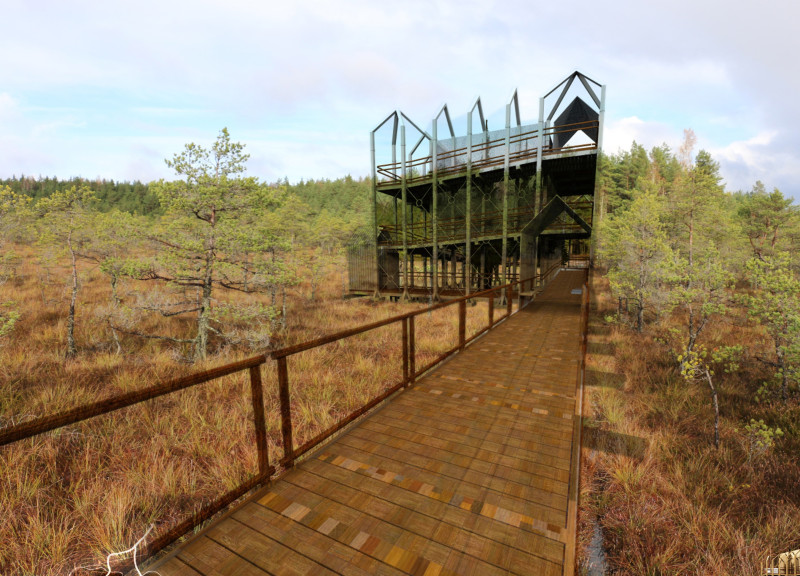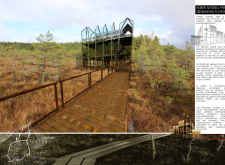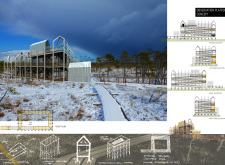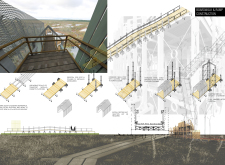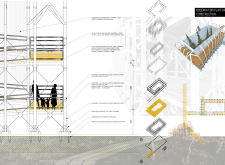5 key facts about this project
The primary function of the observation platform is to provide visitors with a safe and accessible means to experience the beauty of the park. It serves as a viewing area where individuals can appreciate the landscape and observe the unique flora and fauna of the region. The design fosters a sense of connection to nature, encouraging a level of introspection and contemplation in a serene setting.
One of the most important aspects of the project is its elevated structure. The platform is raised above the sensitive bog landscape, effectively minimizing its environmental impact. This elevation allows for unobstructed views while ensuring that the delicate ecosystems below remain undisturbed. The use of ramps and pathways enhances the accessibility of the platform, allowing individuals with varying mobility levels to navigate the space comfortably. This design choice reflects a commitment to inclusivity, demonstrating an understanding of the diverse needs of visitors.
Material selection plays a crucial role in the overall design, with an emphasis on sustainability and durability. Spruce wood is utilized prominently throughout the platform due to its natural aesthetic qualities and compatibility with the surrounding environment. This choice not only contributes to the visual coherence of the project but also aligns with ecological values by utilizing a renewable resource. The incorporation of polycarbonate as safety barriers allows for transparency while ensuring visitor safety without obstructing views. Additionally, steel components are employed for structural support, offering strength while maintaining a lightweight profile that is effective in the delicate bog conditions.
The design approach taken in this project is distinctive and thoughtful. The integration of natural and built forms reflects a broader architectural philosophy that prioritizes harmony with the environment. Rather than imposing on the landscape, the platform is designed to blend in, utilizing simple, clean lines. This understated aesthetic emphasizes a modern sensibility while respecting the traditional values of landscape architecture.
A unique feature of the observation platform is its educational potential. Beyond simply serving as a viewpoint, the design invites contemplation and learning about the local ecosystem. Through strategically placed information panels and rest areas, visitors are encouraged to engage with their surroundings more deeply. This aspect of the project highlights an important goal: promoting ecological stewardship among individuals who visit the park.
Overall, the Kemeri National Park Observation Platform stands as an example of responsible architectural design that harmonizes with nature. By prioritizing sustainability, accessibility, and visitor engagement, this project serves a vital function in the park and represents a thoughtful approach to architectural design within sensitive environments. To learn more about the specifics of this project, including architectural plans, sections, and detailed design ideas, readers are encouraged to explore the project presentation further.


